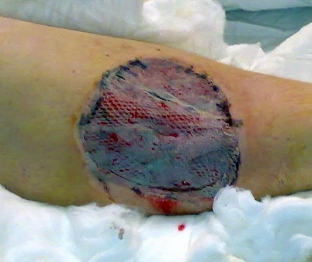The appearance in plastic surgery of the possibility of using skin grafts was a real discovery, since it was thanks to this method that it became possible to close large wounds and defects on the patient's skin. The transplanted site from the donor site is selected taking into account all the features of the recipient zone. Thus, it is possible not only to restore damaged skin, but also to achieve a good aesthetic effect. The main complication after such surgical interventions is graft rejection. How to avoid such consequences after skin graft transplant – read on estet-portal.com.
How to prevent transplant rejection: basic methods
Transplant rejection – This is a situation in which the immune response to a tissue transplant is triggered in the body, resulting in its rejection. When transplanting a skin graft, there is also always the possibility of rejection. In order to prevent necrotic processes in transplanted tissues, it is important to take into account some important aspects of the entire transplantation process. Sufficient vascularization of the recipient site or prepared granulation tissue, as well as close contact with the graft, play an important role in engraftment of the skin graft. Compliance and provision of all these conditions helps to prevent rejection of the skin graft.

Transplant rejection:
- Recipient bed vascularization and graft rejection: what is the connection?
- What role does blood supply play in transplant rejection?
- Bacterial contamination of the wound may cause graft rejection.
Recipient bed vascularization and graft rejection: what is the connection
Sufficient blood supply to the recipient bed is assessed by some plastic surgeons by the pattern of granulation tissue growth. If the granulations are growing, this means that the blood supply is sufficient. In this case, the graft does not have to be transplanted specifically to the granulation tissue; first of all, it must be placed in a well-perfused bed. Removal of the epithelium from the recipient bed is accompanied by an increase in the number of blood vessels in this area, which greatly increases the survival rate of transplanted grafts. Thus, maintaining a sufficient blood supply to the recipient area helps prevent graft rejection.
What role does blood supply play in transplant rejection
The vascularization of the site of transplanted skin also plays an important role in the occurrence of graft rejection. Two main factors can be distinguished:
- plasma impregnation: immediately after contact with the recipient zone, the graft begins to absorb the plasma fluid that is produced by the wound surface. During the first 48 hours after transplantation, the graft absorbs plasma fluid, which leads to an increase in its weight, and only after this time the blood circulation in the graft begins;
- Ingrown blood vessels: during the first 48 hours after transplantation, capillaries grow into the fibrin network that connects the graft to the recipient bed. If a hematoma or seroma is formed between the graft and the recipient bed – these processes are disturbed, as a result of which a graft rejection reaction may occur.
Bacterial contamination of the wound may cause graft rejection
There are important differences between a recipient site that has been prepared for skin grafting directly in front of it and a wound that has been in existence for some time. In the second case, in addition to sufficient blood circulation necessary to prevent graft rejection, the bacterial characteristics of the wound also play an important role. If a wound contains more than 100,000 bacteria per gram of tissue, it is infected and the graft will not take root. In a situation with a long time existing wound, it is important to assess its bacterial contamination and, if necessary, remove bacteria by mechanical cleaning of the wound and washing it with a pulsating fluid jet. Granulation tissue from such a wound is removed by scraping with the blunt side of a scalpel.







Add a comment